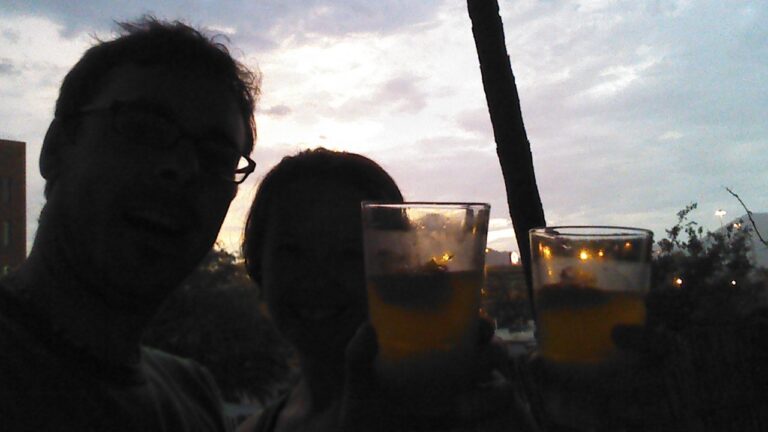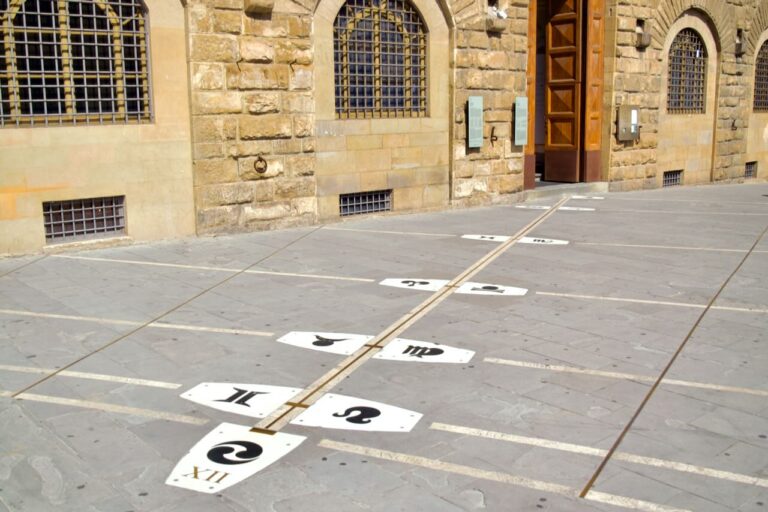Friday, September 13th | 2024 | Day 16
Everyone knows Italians are famous for talking with their hands. After meeting up with Deb, then Bill and Anahi at Pasticceria Ciapetti for coffee, we piled into the classroom for what was my favorite lesson—gesti.
There is a vast array of around two hundred and fifty gestures commonly used in everyday interactions. Some are almost universal, like tapping one’s wrist to ask for the time. Others, such as the pinched fingers of the Italian hand, are rather specific to the culture. In general, that one means “what do you want,” or “what are you saying,” but is also used to express frustration or disbelief. One of my go-tos is the horns, which is like saying “rock on” or “heck yeah” in the US. Avoid using it in Italy, as it is highly offensive and literally means you are damning or putting a hex on someone.
Quite possibly genetic, gestures felt almost second nature. Part of what makes them so fun is that they all come with a matching facial expression and a little bit of attitude.
Giusy explained that with so many different languages and regional dialects spoken in Italy, hand gestures became a sort of common sign language. She put on a video that went through a number of gesti, then played it again with no sound. The exercise was to have a full and entirely silent conversation. With gusto and exaggeration, taking turns with classmates left us all laughing out loud.
Once class was dismissed, Bill and Anahi asked if we wanted to join them for lunch at a spot they highly recommended. Like many of the best restaurants, it was family-run and cozy, without the pretense or price of being trendy. A nice, simple Bolognese sounded just right. When I ordered, la nonna said “If you want Bolognese, you go to Bologna. In Tuscany, we make ragù.” Similar to Bolognese, ragù is a red sauce served over spaghetti, but made with a mix of beef and wild boar. Molto Toscana e molto delizioso!
After lunch, Deb and I wandered around for a while to walk off the pasta. It was a little warm and without any real destination, we decided to stop at Caffè Perseo on Piazza della Signoria. Sitting at the very corner of the outdoor patio, we picked at the complimentary appetizers while enjoying a spritz. It was a lovely, sunny afternoon and we had an excellent view of the buzzing square. A seemingly endless stream of people walked by. Carriages came and went, or lingered for the next fare. It was apparently lunch time for the horses and we watched bales of hay get devoured rather quickly.
It was time to head home and rest for a bit. With no group dinner planned that evening, we arranged to reconvene shortly after seven.
Off the tram at Stazione Unità and with too many options, we ended up at Novella Osteria for a third time. I looked over the wine list and chose a bottle based on one of my favorite saints and songs by the Dead. The Santo Stefano Chianti Classico was superb. I sampled many excellent Tuscan wines over the course of the trip, but this red rose into the top three.
Over a delicious main course of honey sesame chicken, conversation centered around this wonderful adventure and how it was coming to a close far too quickly. At first, three weeks seemed like a huge amount of time—to see Florence, take solo day trips to Padua and Ravenna, to take it all in while still finding time to get lost. In reality, it wasn’t nearly enough.
One of the best aspects of the entire trip was having an awesome activity partner to hang with. Deb reminded me a little of my stepmom. Super smart, refined, sophisticated, and elegant. Our conversations were always pleasant, and her stories—especially those about her work abroad—were fascinating. It was beyond delightful to spend time with someone eager to explore and experience new things. She was truly an integral part of what made the trip extraordinary.


